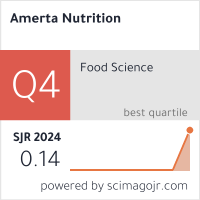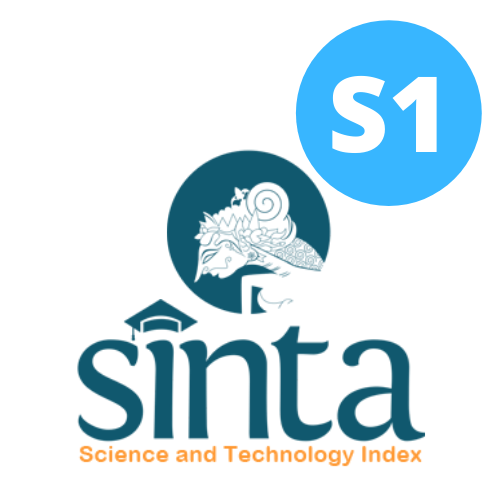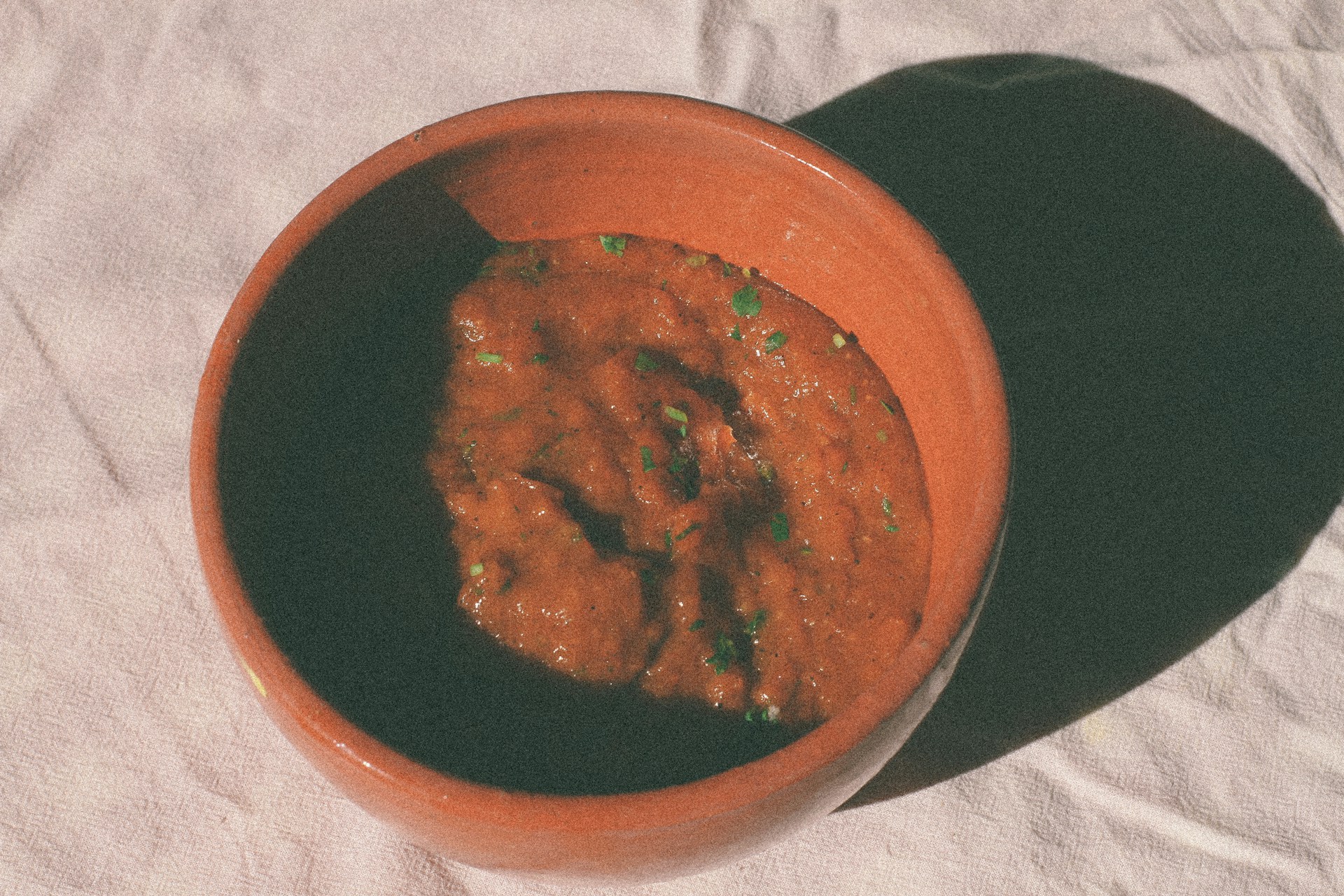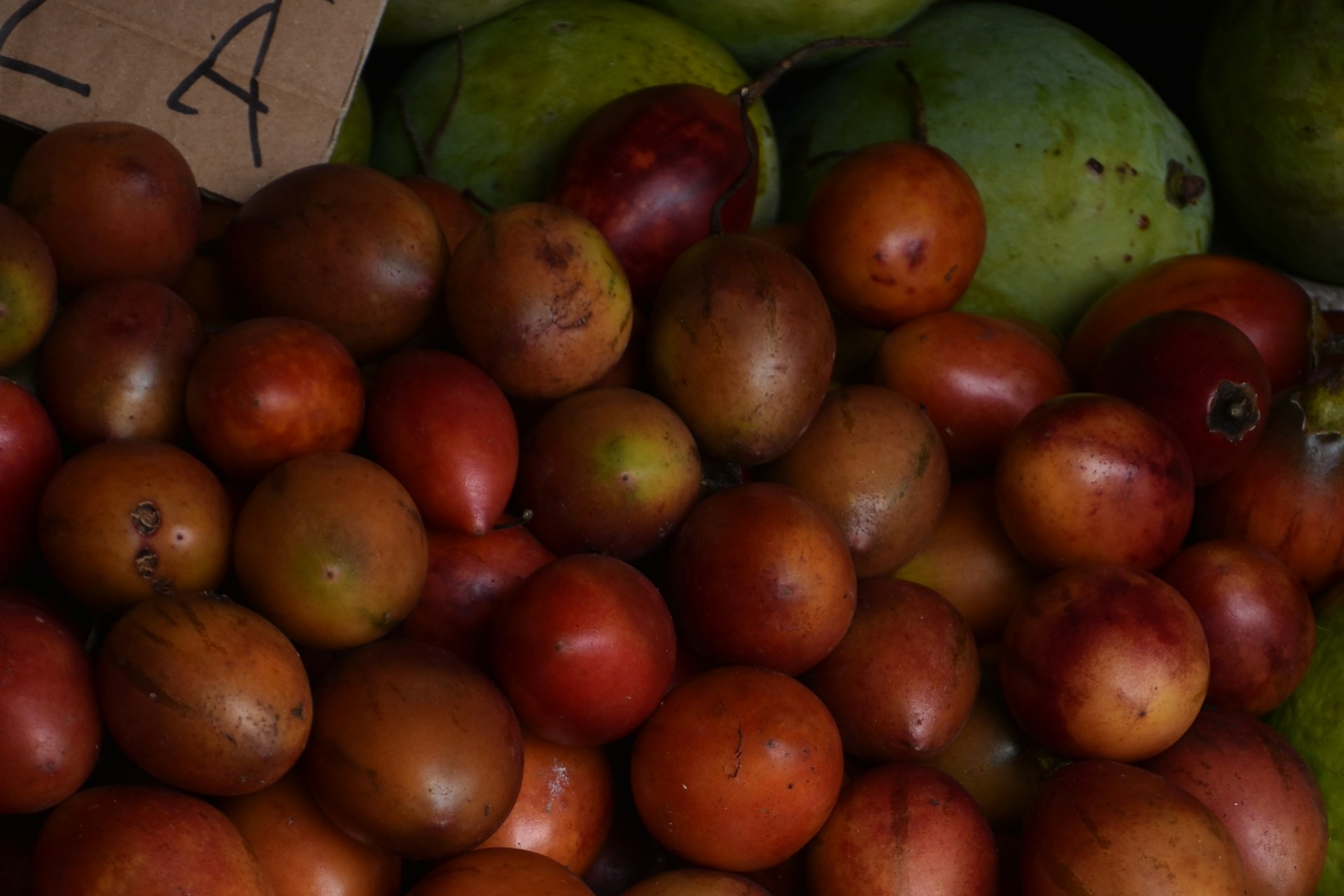Factors Affecting Abdominal Circumference in Adolescent Girls
Faktor-Faktor yang Berpengaruh terhadap Lingkar Perut pada Remaja Putri

Downloads
Background: Central obesity was a health problem in Indonesia. One of indicator to find out central obesity was abdominal circumference. According to preliminary research, 28.4% of students had abdominal circumference >80 cm. Central obesity cause is multifactorial.
Objectives: To identify factors related to abdominal circumference in adolescent girls.
Methods: The design research was a cross-sectional. The total sample was 89 respondents, using the Lemeshow formula. The Sampling was taken by purposive sampling. The abdominal circumference data was measured by a metline. The percentage of body fat was analyzed with the Omron body fat analyzer. Food consumption patterns used Semi Quantitative Food Frequency (SQ-FFQ). Emotional overeating used the Adult Eating Behaviour Questionnaire (AEBQ), diet attitude, and oral control with the Eating Attitude Test (EAT)-26. The Data was analyzed by STATA 13 with the spearman test.
Results: Relationship of BMI (p=0.000; r=0.677), percentage of body fat (p=0.000; r=0.56), kind of junk food (p=0.02; r=0.23). frequency of junk food (p=0.04; r=0.21), energy intake from junk food (p=0.0061, r=0.28), fat intake from junk food (p=0.018, r=0.24), total enery intake (p=0.036; r=0.222), total fat intake (p=0.01; r=0.24); total fiber (p=0.17; r=0.14); overeating (p=0.018, r=0.25); diet attitude (p=0.000; r=-0.52), and oral control (p=0.0001; r=0.39) with abdominal circumference.
Conclusions: There was a relationship between BMI, body fat percentage, junk food consumption pattern (type, frequency, amount of intake and fat), energy intake, fat intake, emotional overeating, diet attitude, and oral control of the abdominal circumference. There was no significant relationship between fiber intake and abdominal circumference.
Harbuwono, D. S., Pramono, L. A., Yunir, E. & Subekti, I. Obesity and central obesity in indonesia: Evidence from a national health survey. Med. J. Indones. 27, 53–59 (2018).
Kementrian Kesehatan RI. Laporan Nasional RISKESDAS 2018. (2018).
Nugroho, P. S. Jenis Kelamin Dan Umur Berisiko Terhadap Obesitas Pada Remaja Di Indonesia. An-Nadaa J. Kesehat. Masy. 7, 110 (2020).
Septiyanti, S. & Seniwati, S. Obesity and Central Obesity in Indonesian Urban Communities. J. Ilm. Kesehat. 2, 118–127 (2020).
Putri, R. N., Nugraheni, S. A. & Pradigo, S. F. Faktor-faktor yang berhubungan dengan kejadian obesitas pada remaja umur 13–15 tahun di Indonesia (analisis lanjut data Riskesdas 2018). Media Kesehat. Masayarakt Indones. 6, 43 (2022).
Luthfiya, L. & Nabawiyah, H. Hubungan Konsumsi Makanan Jajanan Terhadap Obesitas Sentral Pada Mahasisiwi Berbasis Pesantren. Arsip Gizi dan Pangan 7, 1–8 (2022).
Albaloul, A. H. Factors associated with waist circumference in UK adults ' population degree of PhD. (Imperial College London Department, 2022).
Kurdanti, W. et al. Faktor-faktor yang mempengaruhi kejadian obesitas pada remaja. J. Gizi Klin. Indones. 11, 179–190 (2015).
Nugraha, A. W., Sartono, A. & Handarsari, E. Konsumsi Fast Food dan Kuantitas Tidur Sebagai Faktor Risiko Obesitas Siswa SMA Institut Indonesia Semarang. J. Gizi 8, 10–17 (2019).
O'Neill, B. V. et al. The relationship between fat mass, eating behaviour and obesity-related psychological traits in overweight and obese individuals. Appetite 59, (2012).
Jaakkola, J., Hakala, P., Isolauri, E., Poussa, T. & Laitinen, K. Eating behavior influences diet, weight, and central obesity in women after pregnancy. Nutrition 29, 1209–1213 (2013).
Darsini, D., Hamidah, H., Notobroto, H. B. & Cahyono, E. A. Health risks associated with high waist circumference: A systematic review. J. Public health Res. 9, 94–100 (2020).
Masrul, M. Epidemi obesitas dan dampaknya terhadap status kesehatan masyarakat serta sosial ekonomi bangsa. Maj. Kedokt. Andalas 41, 152 (2018).
Horiuchi, R. et al. Analysis of the Factors Controlling the Abdominal Circumferences in Japanese High School Students Using the Bayesian Network. Jfn (2020) doi:10.17303/jfn.2020.6.201.
Triyono. Teknik Sampling Dalam Penelitian Sosial. Lokakarya Penelit. Sos. Fak. Adab IAIN Suka Yogyakarta XI, 2–9 (2018).
Chaves, T. de O. & Reis, M. S. Abdominal Circumference or Waist Circumference? Int. J. Cardiovasc. Sci. 32, 290–292 (2018).
Lim, J. U. et al. Comparison of World Health Organization and Asia-Pacific body mass index classifications in COPD patients. Int. J. COPD 12, 2465–2475 (2017).
Makuituin, F., Jafar, N. & Ulfa, N. Studi Validasi Semi- Quantatif Food Frequency Quistionnaire ( SQ-FFQ ) Dengan Food Recall 24 Jam pada Asupan Zat Gizi Makro Remaja. (2013).
Hunot, C. et al. Appetitive traits and relationships with BMI in adults: Development of the Adult Eating Behaviour Questionnaire. Appetite 105, 356–363 (2016).
Mandiri, A. D. Uji Validitas Konstruk pada Alat Ukur Eating Attitudes Test (EAT-26). JP3I (Jurnal Pengukuran Psikologis dan Pendidik. Indones. 4, 353–363 (2015).
Papini, N. M. et al. Psychometric properties of the 26-item eating attitudes test (EAT-26): an application of rasch analysis. J. Eat. Disord. 10, 1–13 (2022).
Rosyidah, Z. & Ririn Andrias, D. Jumlah Uang Saku Dan Kebiasaan Melewatkan Sarapan Berhubungan Dengan Status Gizi Lebih Anak Sekolah Dasar. Media Gizi Indones. 10, 1–6 (2013).
BKKBN. Pedoman Bina Keluarga Remaja (BKR). (Badan Kependudukan dan Keluarga Berencana Nasional Direktorat Bina Ketahanan Remaja, 2012).
Rahman, J., Fatmawati, I., Syah, M. N. H. & Sufyan, D. L. Relationship between peer group support, pocket money and food consumption patterns with overweight in adolescent. AcTion Aceh Nutr. J. 6, 65 (2021).
Li, M. et al. Pocket Money, Eating Behaviours, and Weight Status Among Chinese Children : The Childhood Obesity Study in China Mega-Cities. Prev. Med. (Baltim). 100, 208–2015 (2017).
Macinnis, R. J. et al. Predictors of increased body weight and waist circumference for middle-aged adults. Public Health Nutr. 17, 1087–1097 (2014).
Gierach, M., Gierach, J., Ewertowska, M., Arndt, A. & Junik, R. Correlation between Body Mass Index and Waist Circumference in Patients with Metabolic Syndrome. ISRN Endocrinol. 2014, 1–6 (2014).
Sudibjo, P., Rismayanthi, C. & Dwi Apriyanto, K. The Correlation between Body Mass Index, Abdominal Circumference, and Hip Circumference on Cardiorespiratory Endurance using the Rockport Method. Adv. i Soc. Sci. Educ. Humanit. Res. 278, 4–7 (2019).
Camhi, S. M. et al. The Relationship of Waist Circumference and BMI to Visceral, Subcutaneous, and Total Body Fat: Sex and Race Differences Sarah. Obes. (silver Spring) 19, 1–7 (2011).
Arif, M., Gaur, D. K., Gemini, N., Iqbal, Z. A. & Alghadir, A. H. Correlation of Percentage Body Fat, Waist Circumference and Waist-to-Hip Ratio with Abdominal Muscle Strength. Healthc. 10, 1–9 (2022).
Mighra, B. A. & Djaali, W. Hubungan antara Persentase Lemak Tubuh, Lingkar Perut, Lingkar Pinggang dan Kekuatan Otot Punggung pada Mahasiswa Olahraga. J. Ilm. Kesehat. 14, 147–152 (2022).
Freuer, D., Meisinger, C. & Linseisen, J. Causal relationship between dietary macronutrient composition and anthropometric measures: A bidirectional two-sample Mendelian randomization analysis. Clin. Nutr. 40, 4120–4131 (2021).
Rafiony, Ayu., Martalena Br Purba., I. D. P. P. Jurnal Gizi Klinik Indonesia Konsumsi fast food dan soft drink sebagai faktor risiko obesitas pada remaja. J. Gizi Klin. Indones. 11, 170–178 (2015).
Cunha, D. B., De Almeida, R. M. V. R., Sichieri, R. & Pereira, R. A. Association of dietary patterns with BMI and waist circumference in a low-income neighbourhood in Brazil. Br. J. Nutr. 104, 908–913 (2010).
Gupta, A., Sachdev, S. & Choudhary, S. Junk Food Consumption and its Association with Anthropometric Indices among undergraduates in Nigeria. Int. J. Res. Rev. 10, 296–304 (2023).
Pebriani, L., Frethernety, A. & Trinovita, E. Studi Literatur: Pengaruh Konsumsi Junk Food terhadap Obesitas. J. Surya Med. 8, 270–280 (2022).
Septiana, P., Nugroho, F. A. & Wilujeng, C. S. Konsumsi Junk food dan Serat pada Remaja Putri Overweight dan Obesitas yang Indekos. J. Kedokt. Brawijaya 30, 61–67 (2018).
Singh, N., Singh, S. & Kshatriya, G. K. Dynamics of junk food consumption with central and general obesity: a cross-sectional study among adolescent Tibetan girls in India. Curr. Sci. 124, 210–214 (2023).
Kim, S., Yang, J. H. & Park, G. H. Eating frequency is inversely associated with BMI, waist circumference and the proportion of body fat in Korean adults when diet quality is high, but not when it is low: Analysis of the Fourth Korea National Health and Nutrition Examination Survey (KNHANE. Br. J. Nutr. 119, 918–927 (2018).
Boylan, S., Hardy, L. L., Drayton, B. A., Grunseit, A. & Mihrshahi, S. Assessing junk food consumption among Australian children: trends and associated characteristics from a cross-sectional study. BMC Public Health 17, 1–9 (2017).
Jia, S. S., Wardak, S., Raeside, R. & Partridge, S. R. The Impacts of Junk Food on Health. Front. Young Minds 10, (2022).
Hartanti, D. & Mulyati, T. Hubungan Asupan Energi, Serat, Dan Pengeluaran Energi Dengan Rasio Lingkar Pinggang-Panggul (Rlpp). Nutr. J. Gizi, Pangan dan Apl. 1, 46 (2018).
Bhaskar, R. Junk Food: Impact on Health. J. Drug Deliv. Ther. 2, (2012).
Arora, K. & Tanwar, N. Junk Food Survey Report. Int. J. Emerg. Trend Sci. Technol. 01, 280–287 (2014).
Elliott, S. A. et al. Associations of body mass index and waist circumference with: Energy intake and percentage energy from macronutrients, in a cohort of australian children. Nutr. J. 10, 58 (2011).
Fransisca. Hubungan asupan energi dan komposisi makronutrien dengan lingkar pinggang remaja usia 15 18 tahun di Jakarta = Relationship between energy intake and macronutrients composition with waist circumference in adolescents aged 15 18 years in Jakarta. (Universitas Indonesia, 2012).
Colby, S. E. & Johnson, L. Macronutrient Intakes and Waist Circumference. Top. Clin. Nutr. 25, 9–19 (2010).
Kooshki, A., Rivandi, M. & Akbarzadeh, R. The Relationship between Macronutrient Intake and Women's Abdominal Obesity in Sabzevar, Iran. J. Nutr. Food Secur. 3, 123–129 (2018).
Arifani, S. & Setiyaningrum, Z. Faktor Perilaku Berisiko yang Berhubungan Dengan Kejadian Obesitas Pada Usia Dewasa di Provinsi Banten Tahun 2018. J. Kesehat. 14, 160–168 (2021).
Du, H. et al. Dietary fiber and subsequent changes in body weight and waist circumference in European men and women. Am. J. Clin. Nutr. 91, 329–336 (2010).
Vandeweghe, L., Vervoort, L., Verbeken, S., Moens, E. & Braet, C. Food approach and food avoidance in young children: Relation with reward sensitivity and punishment sensitivity. Front. Psychol. 7, 1–10 (2016).
Kowalkowska, J. & Poínhos, R. Eating behaviour among university students: Relationships with age, socioeconomic status, physical activity, body mass index, waist-to-height ratio and social desirability. Nutrients 13, 1–13 (2021).
Herle, M., Smith, A. D., Kininmonth, A. & Llewellyn, C. The Role of Eating Behaviours in Genetic Susceptibility to Obesity. Curr. Obes. Rep. 9, 512–521 (2020).
Garner, D. M., Olmsted, M. P., Bohr, Y. & Garfinkel, P. E. Eating Attitudes Test ( EAT-26 ) © Item Scoring. 1982 (1982).
Rukavishnikov, G. V. et al. The association of obesity with eating disorders risk: online survey of a large cohort of Russian-speaking individuals seeking medical weight correction assistance. J. Eat. Disord. 9, 1–7 (2021).
Copyright (c) 2024 Amerta Nutrition

This work is licensed under a Creative Commons Attribution-ShareAlike 4.0 International License.
AMERTA NUTR by Unair is licensed under a Creative Commons Attribution-ShareAlike 4.0 International License.
1. The journal allows the author to hold the copyright of the article without restrictions.
2. The journal allows the author(s) to retain publishing rights without restrictions
3. The legal formal aspect of journal publication accessibility refers to Creative Commons Attribution Share-Alike (CC BY-SA).
4. The Creative Commons Attribution Share-Alike (CC BY-SA) license allows re-distribution and re-use of a licensed work on the conditions that the creator is appropriately credited and that any derivative work is made available under "the same, similar or a compatible license”. Other than the conditions mentioned above, the editorial board is not responsible for copyright violation.












































